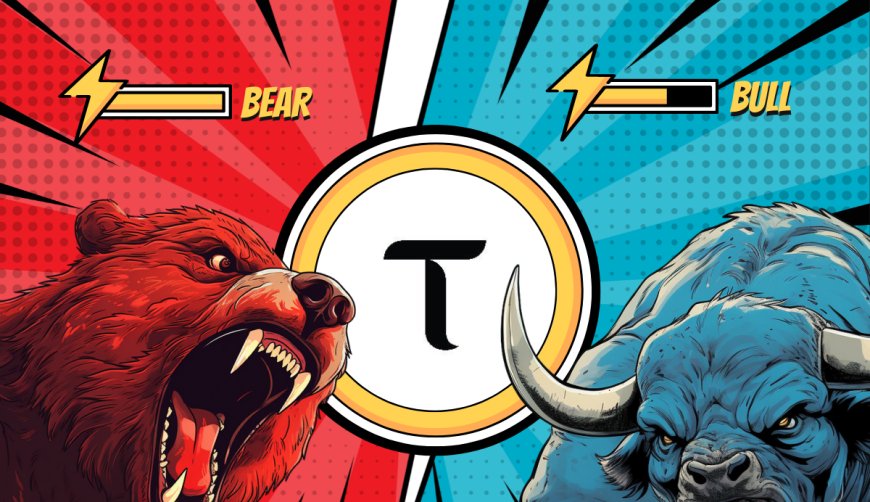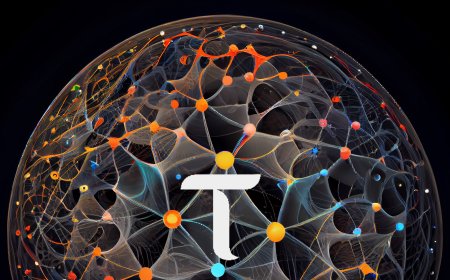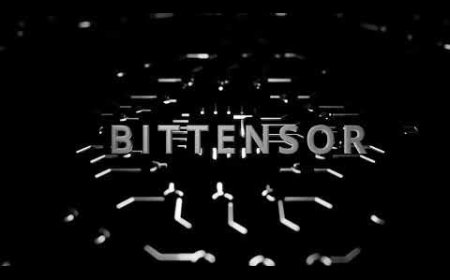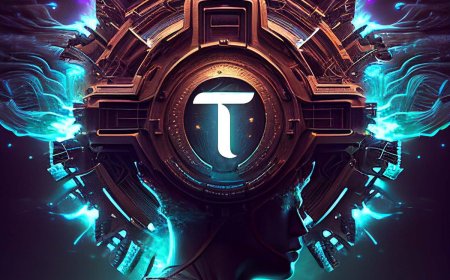Bit Tensor: Revolutionizing the AI Landscape with Decentralized Intelligence and Blockchain Technology
Bit Tensor is an innovative project that aims to create a decentralized artificial intelligence network using blockchain technology. This groundbreaking approach combines the power of machine learning with the decentralized nature of blockchain to accelerate AI development and make it more accessible to a wider audience.

In this article, we'll explore the key aspects of Bit Tensor, its potential impact on the AI industry, and why it's being hailed as a revolutionary development in both the AI and blockchain spaces.
What is Bit Tensor?
At its core, Bit Tensor is a decentralized AI marketplace where participants can contribute computational power, develop AI models, and access AI capabilities. The system consists of three main components:
- Miners: Computers that run AI models and produce intelligence outputs.
- Validators: Nodes that evaluate the quality and value of the intelligence produced by miners.
- Tau Token: The native cryptocurrency of the Bit Tensor network, used for incentivizing participants and accessing AI services.
The Bit Tensor network operates similarly to Bitcoin mining, but instead of solving cryptographic puzzles, participants are producing and validating AI intelligence. This approach allows for a more efficient and collaborative development of AI technologies.
The Power of Decentralized AI
One of the key advantages of Bit Tensor's approach is its ability to create a compounding of knowledge within the network. Traditional AI development often requires starting from scratch with each new model, even when building upon existing work. Bit Tensor solves this problem by allowing models to learn from each other and build upon existing knowledge.
This approach has led to rapid progress in the network's capabilities. In just under a year of operation, Bit Tensor has reportedly reached a collective size that surpasses GPT-2 and is approaching GPT-3 levels. This accelerated development is made possible by contributions from a large number of participants, rather than relying on the resources of a single company.
Subnets and Specialization
Bit Tensor introduces the concept of subnets, which allow for specialization within the network. These subnets enable the development of models for specific use cases, languages, or cultures. For example, a subnet could be created for Arabic language models, with further specialization for different dialects within the Arabic-speaking world.
This approach allows for a more diverse and inclusive AI ecosystem, addressing the limitations of centralized AI models that may overlook or misrepresent certain cultures or languages. Subnets also provide flexibility for developers to focus on specific domains or applications without compromising the overall network's performance.
Validators and Quality Control
Validators play a crucial role in the Bit Tensor ecosystem. They act as front-facing entities, providing APIs for users to access the network's capabilities. Validators also ensure the quality and reliability of the AI outputs by running a stack of reward models to evaluate the responses from miners.
This system creates a competitive environment where validators strive to provide the best service to users while maintaining the integrity of the network. It also allows for a more transparent and accountable AI development process. Validators can specialize in certain subnets or types of AI tasks, further enhancing the network's efficiency and quality of outputs.
The Tau Token and Incentivization
The Tau token is the lifeblood of the Bit Tensor ecosystem. It serves as both an incentive for miners and validators and a means of accessing AI services on the network. The token follows a Bitcoin-like emission schedule, with a total supply cap of 21 million and halvings approximately every four years.
The tokenomics of Tau are designed to create a sustainable ecosystem where the value of the token is directly tied to the utility and growth of the network. As more participants join and the capabilities of the network expand, the demand for Tau is expected to increase.
Tau holders can also participate in the governance of the network, influencing decisions on subnet creation, resource allocation, and protocol upgrades. This aligns the interests of token holders with the long-term success of the project.
Open-Source Development and Transparency
Bit Tensor is committed to open-source development, which allows for greater transparency and collaboration in the AI community. This approach stands in contrast to the closed, proprietary models developed by large tech companies.
By making the development process open and accessible, Bit Tensor aims to reduce bias in AI systems and create more ethical and accountable AI technologies. The project also regularly publishes research papers and participates in major AI conferences to establish credibility within the academic and research communities.
This commitment to open-source principles extends to the entire ecosystem, encouraging developers to share their models and innovations with the community. This fosters a culture of collaboration and rapid innovation that is often lacking in more closed, competitive AI development environments.
Challenges and Opportunities
While Bit Tensor presents an innovative approach to AI development, it also faces some challenges:
- Hardware requirements: As the network grows, the computational demands for miners and validators increase, potentially limiting participation to those with significant resources.
- Adoption: The project is still in its early stages and needs to attract more developers and users to reach its full potential.
- Competition: Bit Tensor is entering a space dominated by large tech companies with substantial resources.
- Regulatory landscape: As with many blockchain projects, navigating the evolving regulatory environment for cryptocurrencies and AI technologies can be challenging.
However, these challenges also present opportunities for growth and innovation. The project's decentralized nature and incentive structure could potentially attract a diverse range of participants, leading to novel AI applications and services. The hardware challenge could be addressed through innovative solutions like pooled mining or cloud-based participation options.
The Future of Bit Tensor
The founders of Bit Tensor have ambitious goals for the project's future:
- Becoming a focal point in the AI industry, known for its scale and performance.
- Developing a suite of high-quality AI applications built on top of the Bit Tensor network.
- Establishing Bit Tensor as the "neural internet" where people train and host their AI models.
In the coming years, the team hopes to see:
- Bit Tensor recognized as having the largest neural network in the world, similar to how Bitcoin is known for having the largest supercomputer network.
- A thriving ecosystem of applications built on top of Bit Tensor, showcasing the power of decentralized AI.
- Increased ease of use for developers, making it the default method for fine-tuning and running inference for AI applications.
- Expansion into other AI modalities beyond text, such as image and audio processing.
The project also aims to foster a community of AI researchers and developers who can leverage the network's resources to push the boundaries of AI capabilities. This could lead to breakthroughs in areas such as natural language processing, computer vision, and machine reasoning.

Addressing AI Concerns
Bit Tensor's approach aims to address some of the key concerns surrounding AI development:
- Bias and Abuse: By allowing for decentralized consensus on training data and objectives, Bit Tensor could potentially reduce bias in AI systems. The diverse community of contributors can help ensure that a wide range of perspectives are represented in the training process.
- Centralization of Power: The project's decentralized nature aims to prevent the concentration of AI capabilities in the hands of a few powerful entities. This distribution of power can help mitigate the risks associated with AI being controlled by a small group with potentially misaligned interests.
- AI Alignment: By giving individuals a stake in the development and governance of AI systems, Bit Tensor seeks to ensure that AI remains aligned with human interests. The community-driven approach allows for ongoing discussions and adjustments to keep the technology beneficial to humanity.
- Transparency: The open-source nature of the project allows for greater scrutiny and understanding of AI development processes. This transparency can help build trust in AI systems and allow for faster identification and correction of potential issues.
- Privacy Concerns: While leveraging collective intelligence, Bit Tensor's decentralized approach can potentially offer better privacy protections compared to centralized AI systems that may collect and store large amounts of personal data.
- Ethical Development: The community governance model of Bit Tensor allows for ongoing ethical considerations to be built into the development process, potentially leading to more responsible AI advancement.
Governance and Decentralization
Bit Tensor is committed to true decentralization, with plans to eventually make the foundation irrelevant to the overall project. The team is working on implementing a formalized governance structure that will give the community more control over the network's development and direction.
This approach stands in contrast to some other blockchain projects that have struggled to relinquish control. By prioritizing decentralization, Bit Tensor aims to create a more robust and resilient AI ecosystem that aligns with its core values.
The governance model is designed to evolve over time, allowing the community to propose and vote on changes to the protocol, resource allocation, and strategic directions. This ensures that the project can adapt to new challenges and opportunities while remaining true to its decentralized ethos.
Interoperability and Ecosystem Growth
Bit Tensor recognizes the importance of interoperability in the blockchain and AI spaces. The project is exploring ways to integrate with other blockchain networks and AI platforms to create a more interconnected ecosystem. This could include cross-chain compatibility for the Tau token, as well as bridges to other AI marketplaces or compute resources.
By fostering an open and interoperable ecosystem, Bit Tensor aims to become a hub for AI innovation, attracting developers, researchers, and users from various backgrounds and disciplines. This diversity of participants and use cases could lead to unexpected synergies and innovations that further accelerate the development of AI technologies.
Education and Onboarding
To achieve its ambitious goals, Bit Tensor recognizes the need for extensive education and onboarding efforts. The project is developing comprehensive documentation, tutorials, and developer tools to make it easier for individuals and organizations to participate in the network.
These resources cover topics such as setting up mining operations, developing and deploying AI models on the network, and participating in the governance process. By lowering the barriers to entry, Bit Tensor aims to attract a wide range of participants and foster a vibrant, inclusive community.
Conclusion
Bit Tensor represents a bold attempt to reshape the AI landscape by combining the power of blockchain technology with artificial intelligence. By creating a decentralized marketplace for AI capabilities, the project aims to democratize access to AI and accelerate innovation in the field.
The project's focus on open-source development, transparent governance, and community-driven innovation sets it apart from traditional AI development models. As the AI industry continues to grapple with issues of bias, centralization, and ethical concerns, Bit Tensor offers a promising alternative that could lead to more equitable and responsible AI technologies.
While there are certainly challenges ahead, including hardware requirements and competition from established players, the potential benefits of a more open, collaborative approach to AI development are significant. As the project continues to evolve and attract more participants, it will be fascinating to see how Bit Tensor impacts the future of artificial intelligence and blockchain technology.
The success of Bit Tensor will largely depend on its ability to attract a critical mass of developers, miners, and users. If it can achieve this, it has the potential to become a major player in the AI industry, offering a truly decentralized alternative to the current AI landscape dominated by large tech companies.
For those interested in the intersection of AI and blockchain, Bit Tensor is definitely a project worth watching. As we move towards an increasingly AI-driven future, projects like Bit Tensor may play a crucial role in ensuring that the benefits of AI are widely distributed and that the technology develops in a way that serves the broader interests of humanity. By aligning incentives, fostering collaboration, and maintaining transparency, Bit Tensor aims to create a more equitable and innovative AI ecosystem for all.
Source : @The Bittensor Hub.
















